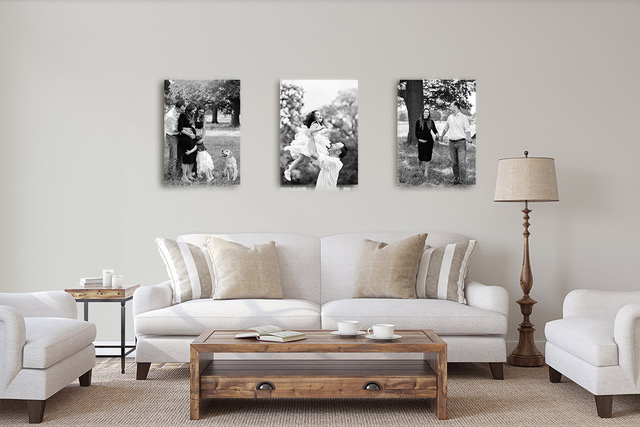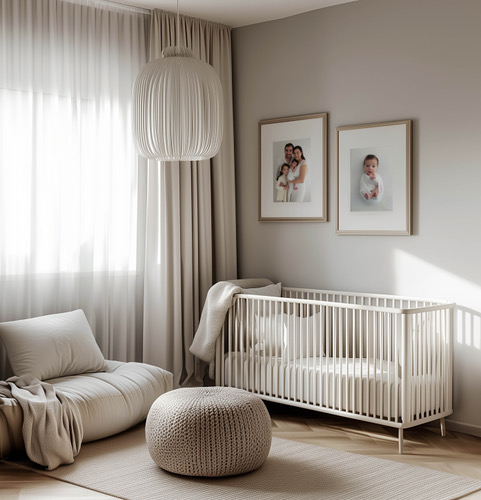Picture this: you have thousands of beautiful photos of your baby’s first year, family holidays, birthday celebrations, and countless everyday moments that make up your family’s story. They’re all right there in your pocket, accessible anywhere, anytime. This is the beauty of living in a digital world, right? But here’s the honest question: how often do you actually sit down and look at them?
Not a quick scroll while waiting for the kettle to boil, but really look, reliving the moments, telling the
stories behind them? And when was the last time you shared those photos with your kids, letting them see their own story unfold?
We’re raising the most photographed generation in history, yet ironically, they’re also the generation with the fewest physical photos of themselves. For many of us, our childhood memories live in albums on a shelf or prints tucked into a shoebox. Remember the joy of pulling them out at your grandparents’ house, flipping through and laughing at old hairstyles or pointing out family resemblances? Those weren’t just photos, they were little anchors of connection, proof of where we came from and who we belonged to.
Our children risk missing out on that. And if tech ever fails us, as it has for so many parents who’ve lost years of photos to broken phones or hard drive crashes, those memories could vanish in an instant, as if they never existed at all.
The Psychology Behind Seeing Yourself in Family Photos
There’s fascinating research in developmental psychology that shows how visual representation impacts a child’s sense of self-worth. When children see themselves displayed prominently in family photos, they receive a powerful, non-verbal message: “You matter. You belong. You are valued.”
Dr. Cathy Malchiodi, an art therapist and researcher, explains that children develop their self-concept partly through external validation and visual cues about their importance in the family unit. Printed photos serve as daily affirmations of their place in the world, tangible proof that they are loved, celebrated, and worthy of being remembered.
This isn’t just theoretical. Studies have shown that children who grow up in homes where family photos are displayed tend to have higher self-esteem and stronger family identity. They develop what psychologists call a “secure attachment” to their family unit, seeing themselves as integral parts of something larger and more meaningful. When a child walks past a hallway lined with family photos or sees their smiling face next to their bed each morning, they’re absorbing messages about their worth that go far deeper than any verbal affirmation. It’s visual proof that they are cherished, that their moments matter enough to be preserved and celebrated.
Everyday Anchors of Love
Printed family photos don’t just boost individual self-esteem, they serve as powerful tools for strengthening family bonds. Unlike digital images that require us to actively seek them out, physical photos create what I call “connection anchors” throughout our homes. These anchors work in subtle but profound ways. A photo on the kitchen wall becomes a conversation starter during breakfast. Children naturally gravitate toward images of themselves and their loved ones, often asking, “Tell me about this day” or “I remember when we did that!” These spontaneous moments become opportunities for storytelling, sharing family history, and reinforcing emotional connections.
Physical photos also create shared experiences across generations. When grandparents visit, those displayed photos become touchpoints for sharing stories and family lore. Children hear about their own adventures from different perspectives, deepening their understanding of their family’s narrative and their role within it.
Moreover, printed photos help establish family traditions and rituals. Many families create annual photo books, holiday displays, or birthday galleries that children eagerly anticipate. These rituals provide structure, continuity, and something to look forward to, all crucial elements for healthy child development.
Simple Ways to Bring Photos Into Your Daily Life
Here are some easy ways to weave printed photos into your everyday family life:
Create a family gallery wall: Choose one hallway or wall space and dedicate it to family photos. Mix different sizes and update it regularly with new adventures and milestones. Children love helping to pick which photos go up, giving them a sense of ownership and pride in their story.
Bedside photo frames: Place a special photo next to each child’s bed. It might be a family portrait, a holiday snapshot, or an image that captures them at their happiest. It’s the last thing they see before they fall asleep and the first thing they notice in the morning, so a soft reminder that they’re safe and loved.
Kitchen and living room displays: High-traffic areas are perfect for rotating photo displays. Change them with the seasons or feature pictures from recent family activities. These casual displays often spark spontaneous conversations like, “Remember when we did that?” the kind of everyday storytelling that strengthens connection.

Photo books for everyday browsing: Digital storage is practical, but children rarely scroll through old photos the way adults do. A photo book on the coffee table invites them to flip through whenever they like. It becomes part of family life, something to share with visiting grandparents or friends.
Invest in a professional family shoot: Capturing everyday moments is wonderful, and you should take as many as you can while they last. But once a year, consider booking a professional family session where everyone can be in the frame together. No more taking turns behind the camera, exist altogether in the photo and create an album that tells your story. Speaking as a mum of a teen, I can tell you those years arrive sooner than you think, and one day your child may not want to be anywhere near a camera. Make the most of the time when they do, and create lasting memories you’ll all treasure. There’s real power in
printing these professional images, and what’s the point of doing a photoshoot if those beautiful photos stay hidden on a hard drive? It’s an investment in your family’s legacy.
The Ripple Effect: Building Confidence That Lasts
When we make the intentional choice to print and display family photos, we’re doing more than decorating our homes, we’re actively participating in our children’s emotional development. The confidence that comes from seeing yourself valued and celebrated in your family environment doesn’t just stay at home. It follows children into their relationships, their school experiences, and eventually into their adult lives. Children who grow up surrounded by visual reminders of love and belonging tend to develop stronger social skills, greater resilience in the face of challenges, and a more positive self-image. They learn to see themselves as worthy of love and celebration, which affects how they interact with the world around them.
Perhaps most importantly, we’re creating a legacy, not just of preserved memories, but of intentional parenting. We’re teaching our children that moments matter enough to be celebrated, that family connections are worth investing in, and that they are important enough to be remembered and displayed with pride.
In our rush toward digital convenience, let’s not forget the simple power of a printed photo. In a world where so much feels temporary and ephemeral, physical photos offer something irreplaceable: permanent, tangible proof that our children’s lives matter, their joy is worth celebrating, and their place in our hearts is secure. The investment in printed photos isn’t really about the photos themselves, it’s about the confidence, connection, and sense of belonging we’re gifting to our children, one displayed
memory at a time.
About the author
Valentina Rebeschini is a mum and portrait photographer based in London. She specialises in maternity, newborn, and family photography, and is the author of Milk Tales (2025), a collection of real mothers’ breastfeeding journeys. Her passion is helping families preserve their stories in printed heirlooms that can be treasured for generations.
